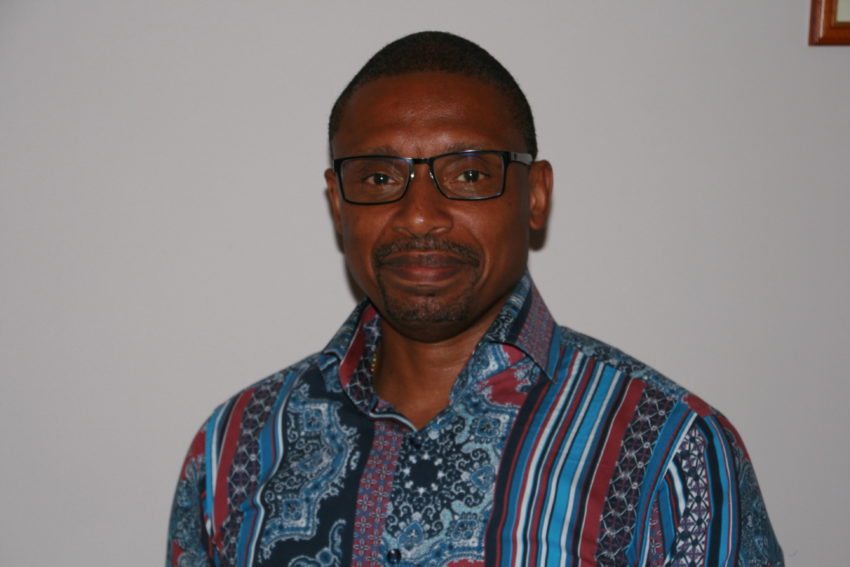During a job interview in the early 1980s, Patrick Alleyne was told that he would make a brilliant role model for black people.
Then, while working at an organisation where he was one of only six black members of staff, a woman expressed surprise that he was there. She said: “You’re not like us, are you?”
“This was a fairly junior member of staff, but they felt sufficiently empowered that they could make that kind of statement,” recalls Patrick.
Those are just two examples of the type of blatant racism that he faced early on in his career. He believes that he has “probably” lost out on jobs due to discrimination, halting his progress, although it’s difficult to prove.
Fast forward to today and, as HR Rewards and Operations Manager for the Greater London Authority (GLA), Patrick is more than happy to be a role model and an inspiration to others. It’s a job he’s passionate about, having helped to shape the organisation’s HR policies for its 1,000 staff, including equal opportunities since it was set up in 2000; and is continuing to develop new initiatives that support diversity and inclusion.
He originally started in catering and operations for what was then British Rail, before setting his sights on a career in personnel. After a stint in the company’s training department, Patrick became district personnel officer for the north region in 1986. From there he moved into the retail motor industry and then two universities – he was head of personnel at the University of Luton (now Bedfordshire) when he joined the GLA.
Building terms and conditions from the ground up
The fledgling organisation was just four months old, which meant that Patrick, together with the senior HR adviser Jackie Jones, had to develop the terms and conditions of employment.
“There
As the most senior HR person in the team, Patrick ran the department for the first nine months, including managing HR consultants, until the first head of HR arrived. A key part of the job in those early days was integrating the staff from three former London boroughs with people newly recruited.
Merging the different cultures of the various bodies would, on the face of it, seem a daunting task. Patrick and the HR team rose to the challenge by quickly developing equalities policies and values. Importantly, they communicated them effectively, including lunchtime seminars with speakers from different GLA teams. This prepared the ground for when the authority moved from its old building in Westminster to City Hall.
“So, we had people from different cultures with those who were direct entrants and that was very much part of the GLA’s new DNA,” he says.
However, he admits that, while most staff operate within the established values, there are some who are unsure where to look for them. But, with the appointment of a new chief officer, this is changing. She is now working with the corporate management and senior leadership teams to examine the values and identify if they should be revised.
“It’s timely because we haven’t done this piece of work since Sadiq Khan has been mayor,” Patrick reveals. “We’re now into the last year of his first term as Mayor and we as officers are working hard to deliver on his strategies and policies as the Mayor’s record of success is key to the electorate returning him for a second term. That means the work we do now will carry forward, and everyone is tuned into the right set of values.”
Fewer men in HR roles
He realises that he is employed in what is traditionally seen as female territory and where there are few men doing his type of job. Patrick believes this has much to do with the history of the profession, with its origins
“My guess, and I don’t know for a fact, was that there were an awful lot of women who were in that kind of position because it was more about – I hate using this phrase – tea and sympathy,” he offers. “But within about three or four years of me working in what was personnel, the terminology became human resources. It changed the dynamic.
“But I think all professions should have a reasonable degree of balance. If you have more men within an HR environment, they bring a different perspective. What you want for any organisation is a mix of perspectives. You will have women challenging men to get them to think differently, and vice versa. But it goes beyond gender, there needs to be representation across the range of protected characteristics and that is something we are passionate about at the GLA.
“When you have that richness of exchange, if you’re developing a policy that’s going to affect your staff population, you want it to be the best you can have, based on the nature of your environment. The way you get there is having that mix of views.”
Redressing the imbalance
In a bid to redress the imbalance at senior level, the GLA had a recruitment drive aimed at attracting more women. It also launched the Our Time sponsoring programme, which is supported by the Mayor.
Job applications are name-blind so that gender is not specified. In drawing up shortlists, recruitment teams try to ensure that they reflect the London population to ensure a proper balance.
The pay gap reports for 2018/19 showed an improvement on the previous year, for both gender and ethnicity.
“It’s because we had a number of changes at the top of the organisation where the gender balance has shifted,” says Patrick. “That’s had quite a positive impact. We’ve still got lots of work that we are doing at the mid and lower ranks; if we achieve as much as we want to in those ranks, we could find a further positive shift in pay gaps next year.
“However, I often put a health warning on pay gap reporting and say that you cannot judge an organisation solely by its pay gap from one year to the next. You need to have a whole series of metrics to give a more holistic picture.”
Reviewing the pay gap analysis is something Patrick has to do on a regular basis. But it’s something he’s very much prepared for, having been on secondment with Gapsquare. He was helping to promote the company’s specialist software for measuring and evaluating pay gaps. It is designed to provide more accurate data to help improve HR decision-making.
Leading the way on D&I
One of Patrick’s proudest achievement at the GLA was introducing a pay and grading system in 2005. That is still being used today, but he recognises it needs to be reviewed and this work is now underway.
Overall, the GLA is leading by example with D&I. It now has a number of staff networks e.g. BAME network, Women’s network and Disability network. Each of these networks has an Executive sponsor and a Mayoral sponsor. The GLA has a Good Work Standard which contains a number of equality, diversity and inclusion related requirements including at excellence level “appropriate action on ethnicity and disability pay gaps following government guidance”.
Diversity and inclusion are led from the top of the organisation with the Chief Officer chairing the Diversity and Inclusion Management Board with membership drawn from management, trade unions, staff networks and the Mayor’s office. This is really driving the diversity and inclusion agenda and senior staff are held to account for their performance in this arena.
There’s also a healthy workplace charter and the GLA funds health screenings for staff, which, Patrick says, “is a great way to support staff with lifestyle choices and provide a route to early detection of health conditions and appropriate treatment”.
Patrick regularly shares the GLA experience with other organisations by, for example, speaking at conferences.
He says: “Obviously lots of organisations look at the Mayor and the in terms of what is being done and want to engage as the GLA is often seen as a leader and setting a good example which others want to learn from and share experience. This is just one reason why it is so rewarding and fulfilling working at the GLA”!









